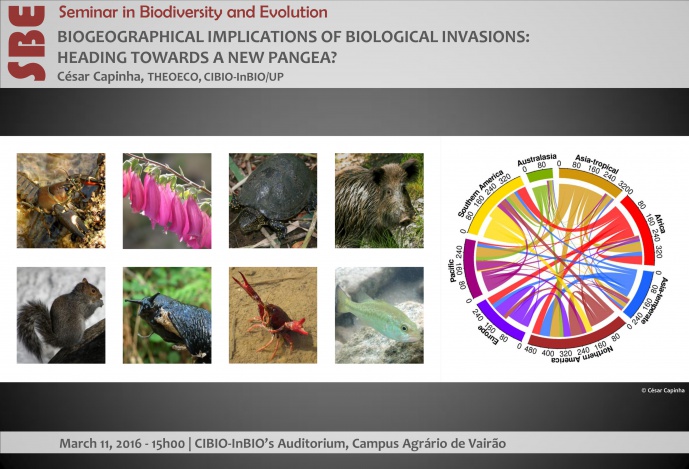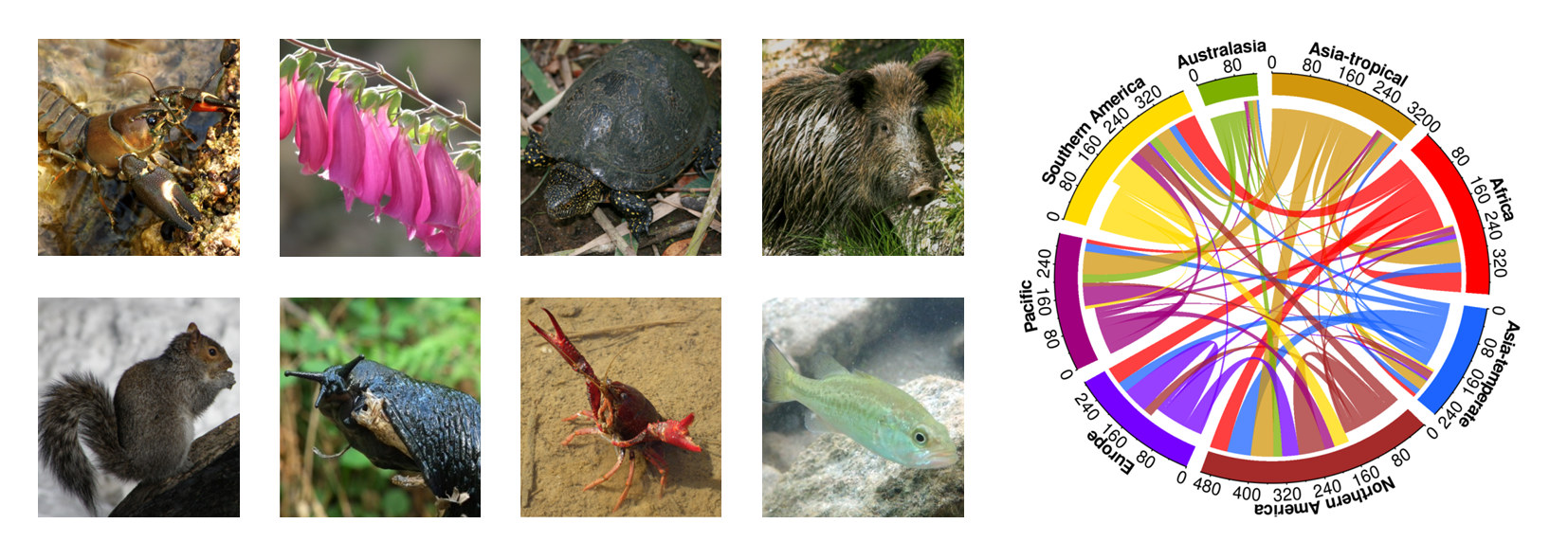BIOGEOGRAPHICAL IMPLICATIONS OF BIOLOGICAL INVASIONS: HEADING TOWARDS A NEW PANGEA?


Invasive species are one of the most notorious environmental problems of our time, being responsible for numerous negative impacts on biodiversity and human welfare. Notwithstanding, as a whole, biological invasions also represent one of the major episodes of global biotic intermixing of all times. I will review the implications of human-mediated dispersal of species for global biogeography, focusing particularly on the spatial and temporal variation of non-native species numbers and on the patterns of compositional similarity among non-native species assemblages.
César Capinha graduated in Geography at the Universidade de Lisboa (2007) and has a PhD in Environmental Sciences from the Universidade de Évora (2012). Currently he is a post-doctoral researcher at CIBIO-InBIO and the Zoological Research Institute and museum Alexander Koenig (Germany). His research interests are mainly focused in understanding how human-driven processes, such as trade and travel and climate change, are shaping the geographical distribution of species and of vector-borne diseases.
[Group Leader: Henrique Miguel Pereira, Theoretical Ecology and Biodiversity Modelling]
Image credits: César Capinha